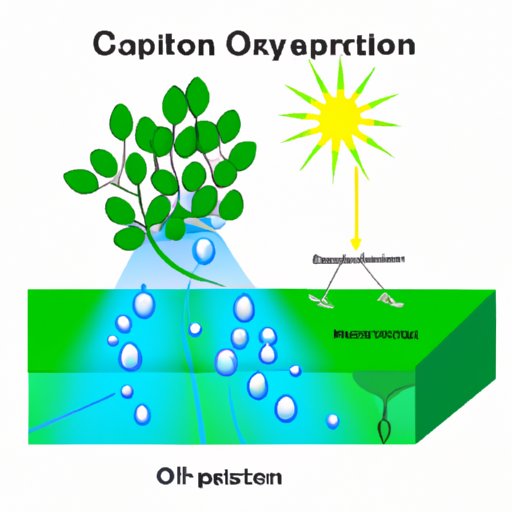Photosynthesis: The Surprising Way Plants Produce Oxygen
Plants are one of the most important organisms on our planet. Not only do they provide food for both humans and animals, but they also play a crucial role in producing oxygen – a gas that is essential for all life on Earth. But how do plants produce oxygen, and what is the process involved? In this article, we will dive into the world of photosynthesis and explore the mechanisms behind oxygen production.
Uncovering the Chemical Reaction Behind Oxygen Production in Photosynthesis
Photosynthesis is the process by which plants convert light energy into chemical energy. At the core of this process is a chemical reaction that involves carbon dioxide, water, and light energy. This reaction takes place in the chloroplasts of plant cells and is composed of two main phases: the light-dependent reactions and the light-independent reactions.
The Role of Chlorophyll in Oxygen Production through Photosynthesis
Chlorophyll is a pigment that is responsible for the green color of plants. It plays a crucial role in photosynthesis by absorbing light energy from the sun. This energy is used to power the chemical reaction that produces ATP – the energy currency of cells. Chlorophyll is also involved in the oxygen-producing pathway, which occurs during the light-dependent reactions of photosynthesis.
The Oxygen-Producing Pathway: Understanding the Light-Dependent Reactions in Photosynthesis
During the light-dependent reactions of photosynthesis, energy from the sun is absorbed by chlorophyll and used to split water molecules into oxygen, hydrogen ions, and electrons. The oxygen is released into the atmosphere as a byproduct of photosynthesis, while the hydrogen ions and electrons are used to create ATP in a process known as the electron transport chain.

Breaking Down the Role of Water in Oxygen Production during Photosynthesis
Water is a crucial component of the oxygen-producing pathway in photosynthesis. During the light-dependent reactions, water molecules are split into oxygen, hydrogen ions, and electrons using energy from the sun. This process, known as water splitting, releases oxygen into the atmosphere and provides the hydrogen ions and electrons needed to create ATP.
The Importance of Carbon Dioxide in the Process of Oxygen Production in Photosynthesis
Carbon dioxide is another crucial component of the photosynthesis process. During the light-independent reactions, also known as the Calvin cycle, carbon dioxide is fixed into sugars by a series of chemical reactions. This process requires energy from ATP and NADPH, which are produced during the light-dependent reactions.
Photosynthesis 101: Exploring the Mechanisms Behind Oxygen Production
In summary, photosynthesis is the process by which plants convert light energy into chemical energy. This process involves a chemical reaction that uses carbon dioxide, water, and light energy, as well as the absorption of light energy by chlorophyll, the splitting of water molecules to produce oxygen, and the fixation of carbon dioxide into sugars. Understanding the mechanisms behind photosynthesis is crucial for solving the problem of oxygen depletion in our atmosphere and for preserving our planet for future generations.
Conclusion
In conclusion, photosynthesis is a complex and fascinating process that is vital for sustaining life on Earth. By understanding the mechanisms behind oxygen production in photosynthesis, we can gain valuable insights into how to protect our planet and ensure a sustainable future for all. So let’s continue to learn, explore, and discover the incredible world of photosynthesis, and take action to protect our planet from harm.
